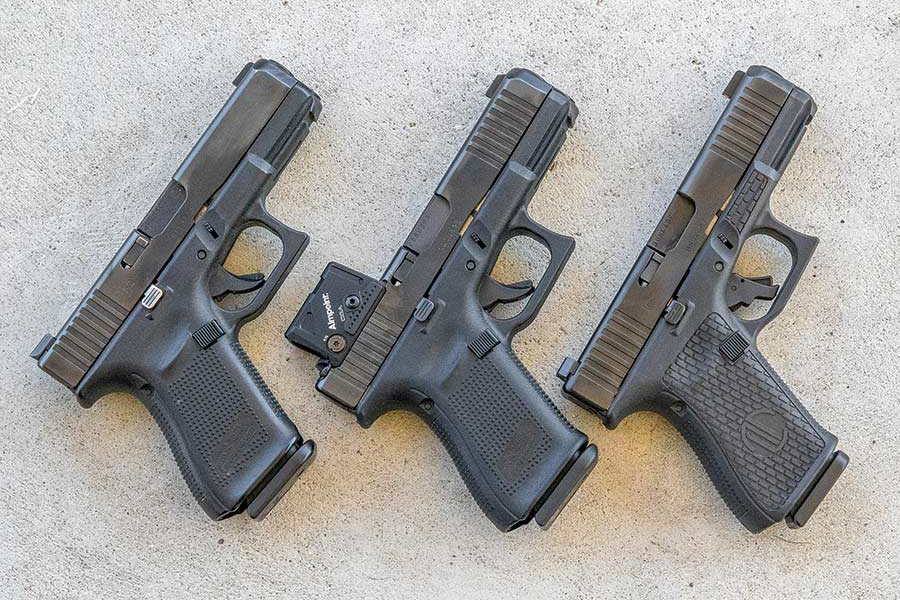This article appears in my long-running Handguns column in the current issue of GUNS magazine, now on the newsstands.
It’s the serious (read: high round count) shooter who really needs the pair and the spare. But if the budget allows, it’s good to have at least the spare.
When bird hunting season opens, if you only have one shotgun and it’s broken, a rifle or handgun just ain’t gonna do it for you. It’s a lousy time to have to borrow a shotgun from someone else, or go out and buy a new one, and in either case have to break it in and pattern it to do your best with it. The ideal, of course, would be an identical shotgun to the one you had planned on using, and were already familiar with.
Target shooting? In the late 1960s when I started shooting bullseye pistol competition, my gun box held my primary, a High Standard Supermatic Citation .22 target pistol and in case anything went wrong with that gun, there was also my ancient pre-war Colt Match Target Woodsman from my early teen years. Never needed it, but was reassured it was there.
On the street? Back in the early 1970s when they first pinned a badge on me, my then-chief of police Maurice Boisvert was a mentor to his officers. He carried the issue gun most of the time, a four-inch barrel Model 10 Smith & Wesson .38 Special. However, when he prosecuted cases (as cops themselves sometimes did in that time and place) he showed up in court in uniform with a two-inch barrel version of the same gun. He explained to me that it was always good to be in uniform and remind the judge that he was “only a cop” up against a real lawyer who spoke for the defense, and that back then a short-barrel gun in uniform was the mark of a supervisor, which told the judge that the cop in question had some time in grade and was competent. He let me prosecute my own cases sometimes, before I went through the State Academy’s grueling Police Prosecutor Course, and when I did so the gun visibly on my hip was the little snub-nose S&W Chief Special .38 I then carried as a backup on duty, not the privately owned/department approved .45 I wore in my duty holster. The backup, part of the patrolling “pair,” had become the spare. By the time I got certified as a police prosecutor in 1988 I was a lieutenant on my second department, so then I testified in uniform with my regular duty belt and .45 auto, still “just a cop, go easy on me Your Honor” and the bars on my collar took care of the other part.
When I hunted big game in Africa I took a .458 Magnum Ruger Model 77, a Steyr-Mannlicher .375 Magnum, and a .308. If one of the big guns had gone down when we were stalking big, brutal Cape Buffalo, there was an adequate “spare” even though they weren’t exactly a “pair.”
As my friend Clint Smith famously said, “Two is one and one is none.”



“Beware the man with one gun because he probably knows how to use it.” If it breaks, however, he is SOL. 😁
And, should something happen to your defensive item, you don’t want to be learning a new one. It may be some time until the other returns. If it does.
This also applies to concealment holsters. When you (finally) find the right holster, buy a spare. If yours get soaked with sweat, water etc, it’s not usable until it’s dry. Also, holsters wear out. Sure as the sun comes up, it’ll get discontinued, something I should have realized before it happened.